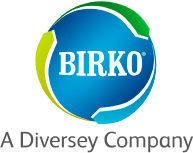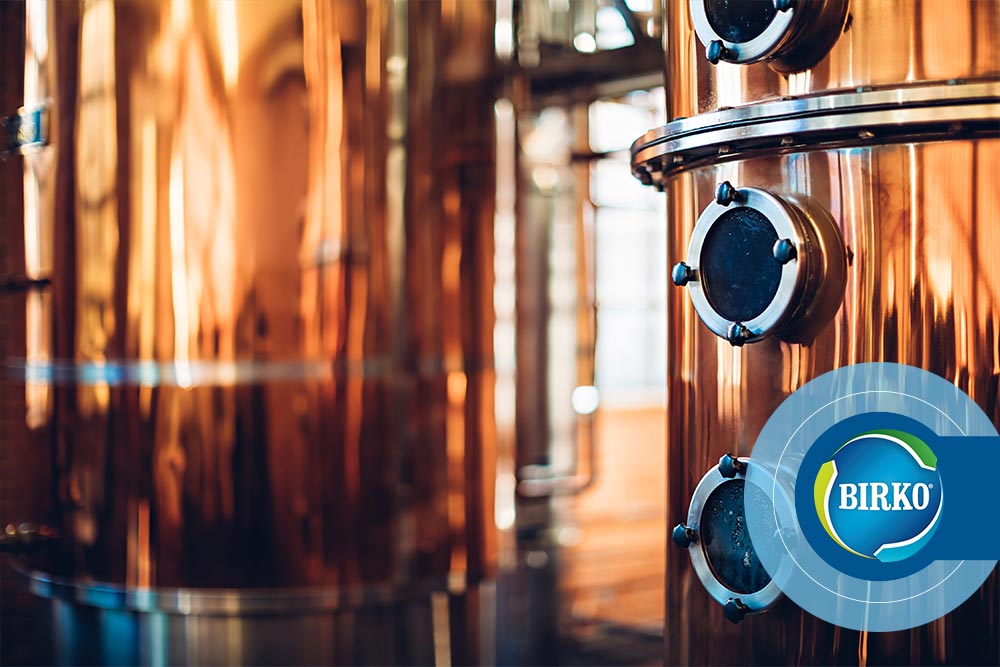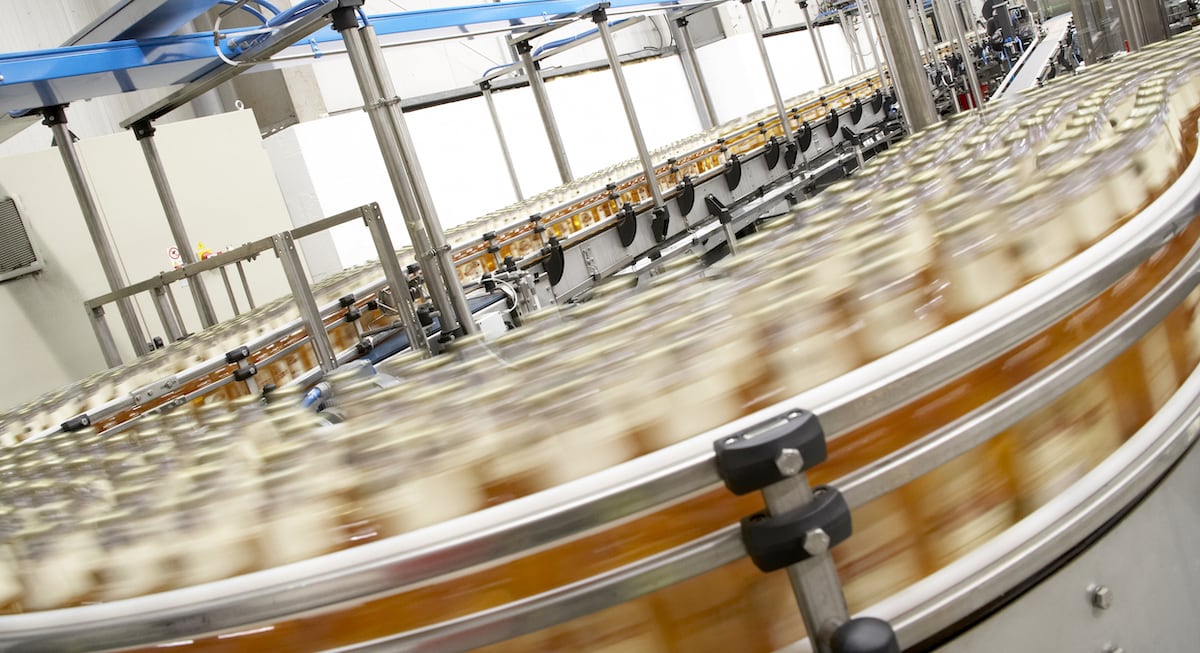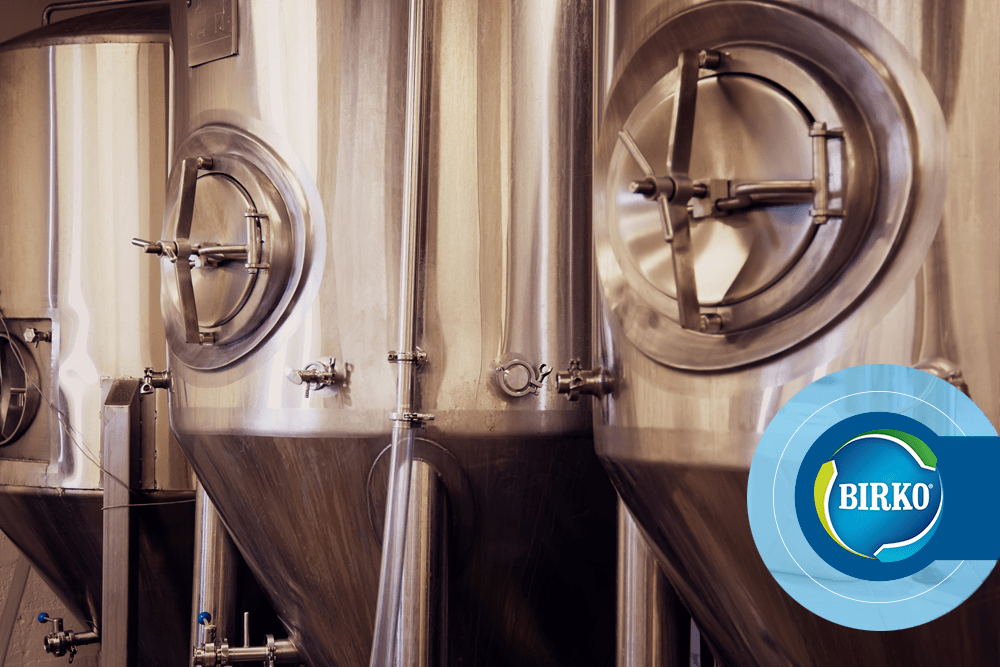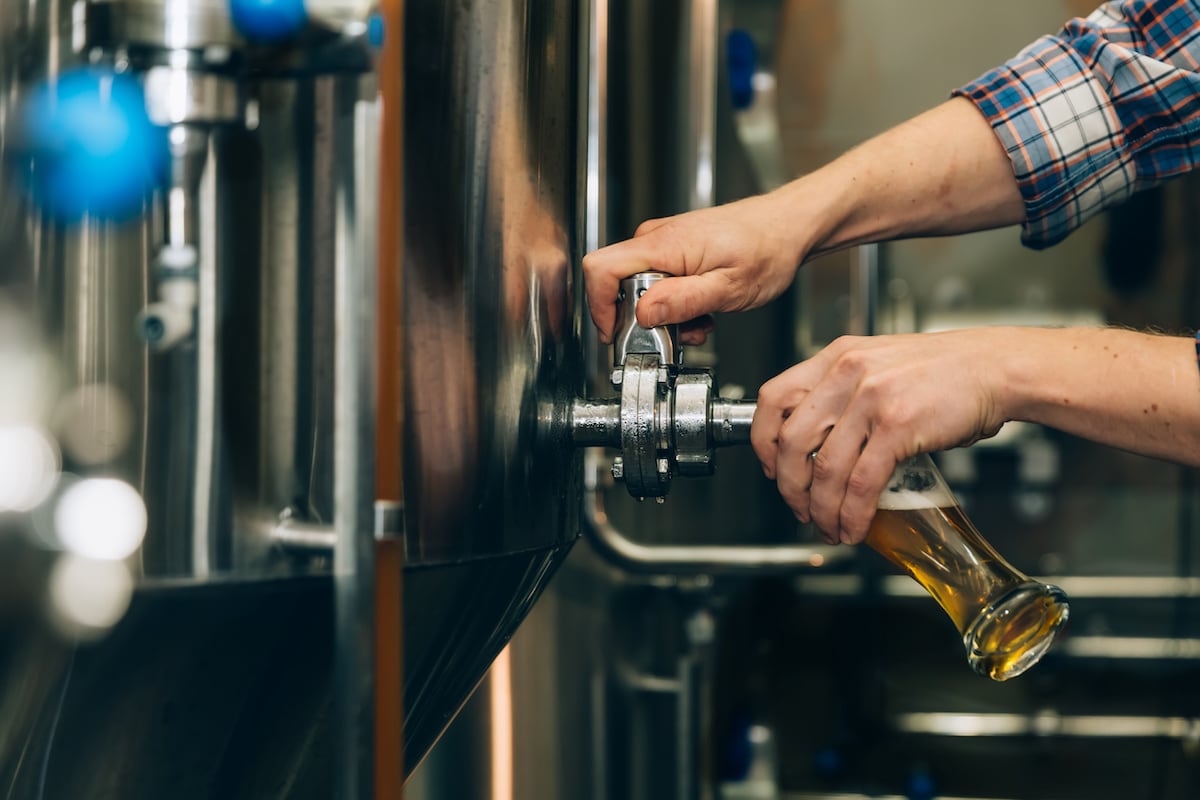Just a few years ago, craft distilleries (unlike craft breweries) were somewhat uncommon, but recently, we’ve seen an explosion in craft distilling, with 1,836 craft distilleries operating in 2019 and New York, California and Washington leading the way in numbers. Distilleries are opening all over the United States as the demand for craft spirits grows and catches up with craft brews. However, like most industries, distilling faces no shortage of challenges as it grows, particularly on the tail-end of the COVID-19 pandemic.
Here are some of those challenges and measures distillers can take to overcome them.
1. The COVID-19 Pandemic: A Mixed Bag of Challenges and Opportunities for Distillers
Like the craft brewing industry, craft distillers faced great concern about employee health and the closing of tasting rooms, restaurants and liquor stores. Many of the distribution channels were cut off seemingly overnight, and the industry had to adapt to new sanitation measures. Not to mention the learning curve for handling new chemicals and using proper PPE, especially as tasting rooms reopened.
However, the pandemic also brought opportunities for some distillers that other industries didn’t see, such as the production of their own hand sanitizers and new products like ready-to-drink cocktails. This helped a number of distilleries remain open and in production, which is critical, given the aging required for producing many spirits like whiskey (two years minimum).
The challenges now lie in expanding distribution, learning new processes and implementing new practices for preventing future outbreaks of COVID-19 or other viruses.
2. Sanitation: Cleaning Distilling Equipment without Damaging It
The COVID-19 pandemic certainly brought new challenges to light, particularly when it comes to sanitation, but equipment poses its own unique set of challenges. Whereas brewing equipment is usually stainless steel and allows for harsher chemicals and more rigorous cleaning, distilling equipment is made from copper. Common sanitizers and cleaning chemicals can easily damage soft metals and cause corrosion, which becomes costly not only in terms of equipment, but also affects the quality and consistency of the final product. These issues can be especially challenging for brewers that have moved into distilling and are more familiar with cleaning stainless steel brewing equipment.
Distilleries use a wide range of metals, which means there’s no one-size-fits-all chemistry appropriate for cleaning all distilling equipment. A cooker, for example, might be all stainless steel, which can withstand aggressive cleaning, but a still might be part stainless steel and part copper, meaning it won’t be able to withstand the same kinds of cleaning methods. So, it’s critical to find the right combination of chemistries for cleaning distillery equipment—you don’t want to damage a $100,000 piece of equipment with a $10 chemical. –Dana Johnson, Technical Director, Craft Brewing
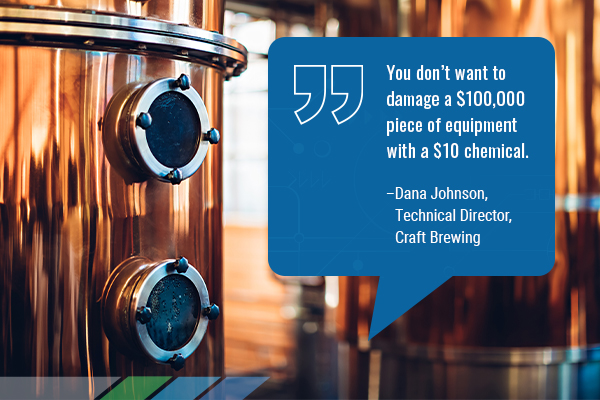
Some distilleries use caustic inhibitors to prevent corrosion from using caustic chemicals on copper stills. However, the results can be inconsistent due to the variance in metals between stills. That means distilleries and brewers breaking into the distilling industry should work with a chemistry provider who can suggest a chemical—or set of chemicals—to use for a specific distiller, including effective non-caustic options.
Another issue distillers face is the potential for infections during the fermentation process. Lactobacillus, acetobacter and acids can grow during fermentation, which can make the product to go sour and impact flavor, ultimately impacting consistency, brand reputation and the bottom line.
3. Sustainability: Improving Wastewater Treatment and Reducing Water Usage
Like brewing and food processing, distilling requires enormous amounts of water, and the distilling industry has been deemed “among the most polluting industries” by some researchers. Pollution is due to the high amounts of organic and nitrogen compounds, low pH, high temperature and dark brown color in the water discharged from the distillery. What’s more, concerns about phosphorus and sodium content are driving local municipalities to tighten regulations on wastewater.
That leaves distillers in a difficult position, especially when it comes to wastewater treatment. Distilleries use almost 12 times as much water by volume as they do alcohol produced, and sanitation methods for open fermenters without a CIP (clean-in-place) system contributes to that water usage. An open fermenter, contrary to its counterpart in a brewery, for example, is usually filled with water to let soak. This method naturally requires more water than a spray ball, meaning it’s not only a large amount of water used, but left over to treat. That makes balancing pH and avoiding polluting the environment yet another challenge.
Distilleries often use more water than breweries, especially during the cleaning process. In the process of cleaning an open fermenter, for example, distillers fill the entire fermenter with water, whereas in a brewery, a brewer might fill a tank of the same size with 10-15% of the same water and clean the tank mechanically with spray balls. Sanitation in a brewery is often much more efficient when it comes to water and chemical use than in a distillery. – George Allen, Business Development Director, Brewing & Distilling
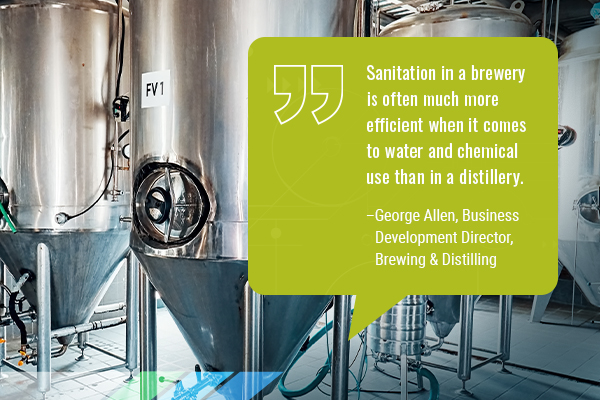
Navigating these complexities has led some of the major distilleries in the United States to seek out EPA consultants or secure permits from local municipalities, but craft distillers don’t always have access to these resources.
There may come a time in the not-too-distant future in which it will become illegal for businesses to put phosphates down the drain, particularly in the Great Lakes area. In other regions of the U.S., municipalities are more concerned about sodium, which makes it difficult for distillers to use non-caustic cleaners, which contain high amounts of sodium. That means distillers face the dual challenge of finding a chemistry appropriate for their equipment . –Dana Johnson
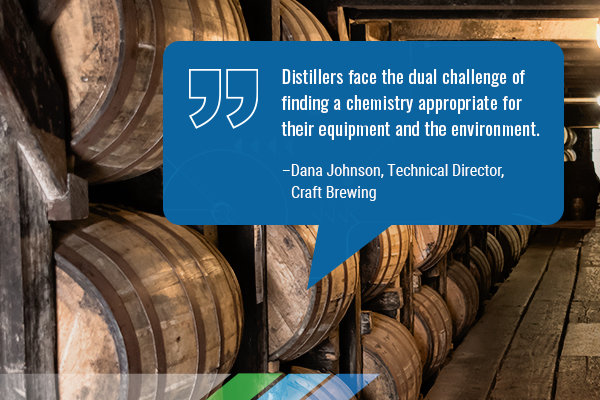
So, what can distilleries do?
With all of the challenges brought on by COVID-19 and long-term sanitation considerations, if you’re a distiller (or brewer opening a distillery), it might feel difficult to focus on your larger goal: producing quality spirits. Utilizing the right chemistries is a starting point for addressing issues such as equipment damage; non-caustic alkaline cleaners, are effective options for cleaning distilling equipment.
Partnering with experts in sanitation and chemistry who understand the environmental regulations is your best bet for navigating the wider set of challenges with which the industry is grappling. Talk with Birko’s brewing and distilling experts today about effective ways to prevent COVID-19 in your facility, ensure worker safety, reduce water usage and adapt to changing government regulations. As an integrated sanitation provider and chemistry expert for over three generations, we’re committed to protecting the food chain—and your bottom line.

